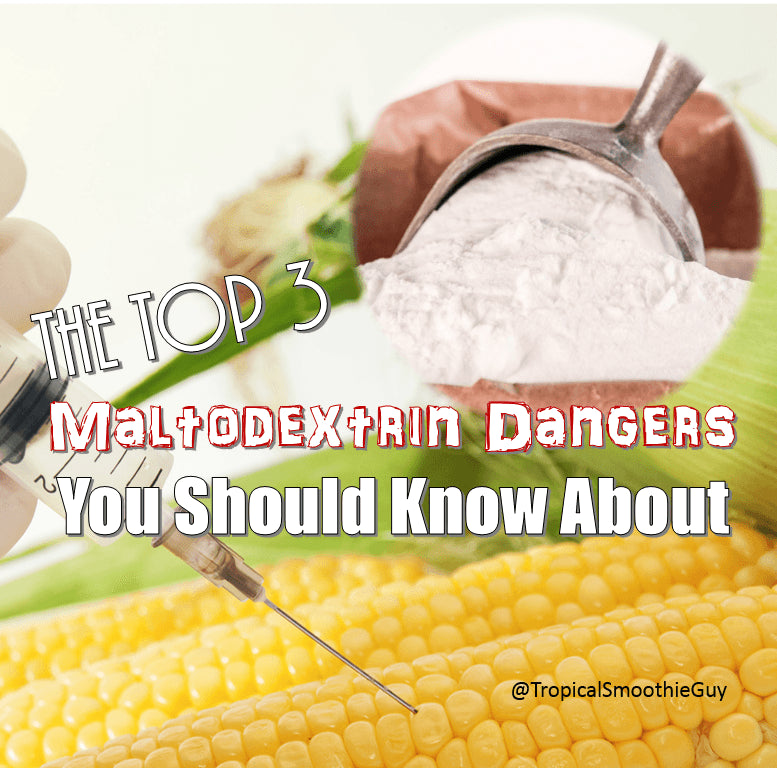Protein powders are a convenient way to supplement your diet and help build muscle. However, not all protein powders are created equal. Some manufacturers add maltodextrin to their protein powders as a cheap filler. Maltodextrin is a carbohydrate that is derived from corn, rice, or potato starch. While it can increase the carbohydrate content of a protein powder, it comes with several risks and issues that make it a questionable ingredient.
Maltodextrin is a high glycemic index carbohydrate, which means it can cause a rapid spike in blood sugar levels. This can lead to an energy crash and increased hunger, making it counterproductive for weight loss goals. Additionally, maltodextrin is often made from genetically modified (GMO) corn or other crops, which can be harmful to the environment and pose potential health risks.
Another issue with maltodextrin is that it can cause digestive issues in some people. It is a highly processed ingredient that can disrupt gut bacteria and cause bloating, gas, and discomfort. This can be especially problematic for people with pre-existing digestive issues, such as irritable bowel syndrome (IBS) or inflammatory bowel disease (IBD).
In terms of protein powders, maltodextrin is often added to increase the protein content per serving. However, this can be misleading as maltodextrin is not a complete protein and does not provide the same amino acid profile as high-quality protein sources like whey, casein, or plant-based proteins.
To avoid the risks and issues associated with maltodextrin in protein powders, it is important to read the ingredient list carefully and choose products that use high-quality protein sources without fillers. Look for protein powders that have undergone third-party testing for purity and quality, and choose non-GMO options if possible.
In conclusion, while maltodextrin may seem like a cost-effective way to increase the protein content of a powder, it comes with several risks and issues that make it a questionable ingredient. Opt for high-quality protein sources without fillers to get the most out of your protein powder supplementation.


4 comments
Great insights on maltodextrin’s hidden risks in protein powders! Food research labs play a crucial role in developing clean, high-quality protein products by conducting rigorous testing for purity, nutritional content, and safety. They help formulate blends free from fillers like maltodextrin, ensuring products meet consumer health standards and preferences. This scientific approach supports transparency and trust in supplements. We help Nutrition and Nutraceutical businesses solve this at FRL. Happy to connect!
According to https://jissn.biomedcentral.com/articles/10.1186/1550-2783-9-54, A combination of a fast-acting carbohydrate source such as maltodextrin or glucose should be consumed with the protein source, as leucine cannot modulate protein synthesis as effectively without the presence of insulin. So in practice, Maltodextrin is required at a moderate quantity.
Another fact about maltodextrin the glycemic of this product is (182-185) where sugar is 65. The FDA would defines this as not a sugar and that is correct per legal definition. Where I feel the immoral action is to advertise products with this substance in it as diabetic friendly. This is why European countries do not allow this additive in their foods.
Hi there, I was researching maltodextrin and why it is added to protein supplements and came across your article which states “In terms of protein powders, maltodextrin is often added to increase the protein content per serving. However, this can be misleading as maltodextrin is not a complete protein and does not provide the same amino acid profile as high-quality protein sources like whey, casein, or plant-based proteins.”.
Maltodextrin is 100% carbohydrate. It is made up of glucose molecules, is normally extracted from grains such as wheat / barley / … It contains no protein and contains no amino acids. Thought you may wish to check and amend your article accordingly.
Regards
T